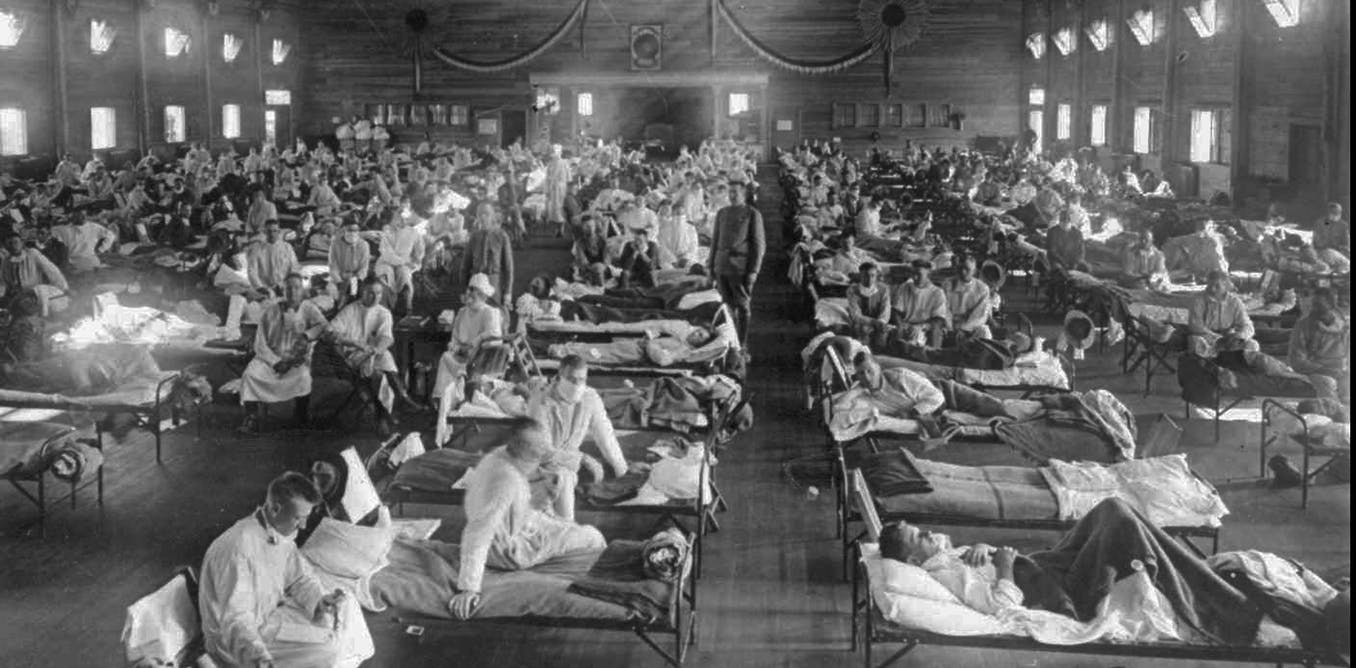The influenza pandemic of 1918, better remembered as the Spanish flu or “Spanish influenza”, was one of the strongest epidemics in the history of humanity. Some data indicates that in Mexico there were almost half a million deaths, others indicate 300,000, and worldwide there were about 50 million deaths.
The flu developed in France and then passed to Spain. Being neutral in the First World War, the Iberian country decided to report the disease and the consequences it was suffering; hence the name of the Spanish flu. Although the war was not the cause of the pandemic, the mobilization of troops was decisive for its rapid and deadly expansion.
The disease arrived in Mexico at the end of September but the newspapers began reporting in October about this violent flu with fatal consequences. It spread through the north of the country at the beginning and “traveled” by rail and ships. Thus began the reports of cases in Nuevo León, Tamaulipas, and Coahuila.
On October 10, 1918, in a global and national war context, newspapers informed readers of the disease with the headline: “A SERIOUS DANGER IS CLOSED ON THE COUNTRY”. Then one could read: “On guard against the Spanish flu. The health department takes energetic measures to prevent the epidemic from spreading. ”
Other newspapers of the time, such as El Democrat, declared between 1,500 and 2,000 daily deaths in Mexico. According to these reports, the number of patients in the populations, cities and some states oscillated between 30 and 200 infected per day.
According to data from the Archive of the General Hospital in Mexico City, the deaths in October 1918 rose and by November they increased significantly.
The main causes of reported deaths were, mostly, flu and pneumonia, followed by bronchopneumonia and bronchitis, all respiratory conditions considered serious.
The symptoms of the Spanish flu resembled those of any common flu, with the difference of the violent reactions.
The government alerted the population and recommended getting away from anyone with the flu; They also warned of the symptoms of the infected: high fever that reached almost 40 °, severe body pain, diarrhea, vomiting, heavy bleeding from the mouth and difficulty breathing.
In the medical reports of the General Hospital of Mexico City it was recorded that, in some cases, very violent nosebleeds and blood marks on the eyes were observed, as well as pigmentation on the skin of the entire face of the patients.
One of the interesting data points of this epidemic was the affected population. Many of its victims were young and healthy adults, and animals, including dogs and cats. The population between 20 and 40 years old was mostly affected by the disease.
On October 13, 1918, a cover story read: “Influenza decreases in some points and flares in others. In the Railways Directorate, important news has been received from different parts of the country. ” That note spoke of the measures that the states took.
In Durango, the epidemic had serious consequences at the beginning, but then the authorities reported a decrease in the number of patients and a hygienic improvement in the population; in Chihuahua there was little invasion of the epidemic, in contrast, in Coahuila, specifically in Torreón, high numbers of contagion and a high number of deaths were reported. That same day, reports gave an alarming fact about the total number of people infected in that state: 66% of the inhabitants were sick.
In Mexico City, the General Hospital published a communiqué on October 15: “The development of influenza in the capital” that reported the patients who arrived there and the lack of medication and space to care for them.
Newspapers published the recommendations to prevent influenza: “Get away from anyone who sneezes, coughs and spits without a handkerchief. Avoid busy places. Do not use dishes or towels used by other people, unless they have been washed with boiling water. Do not put your lips on the telephone speakers, or put pencils or any other object used by another person in your mouth. Be outdoors and in sunlight as long as possible, using warm clothing. Sleep in ventilated rooms, walk instead of using the tram, wash your face and hands when you get home. In case of illness, lie down, remain isolated and call the doctor immediately. ”
The flu lasted the following six months, with the media reporting increases and outbreaks in several regions of the country.
It was until January 2, 1919 when news was published: “Half a million dead … His Majesty passed the flu!”. The note said that the disease had been more deadly than the weapons of the Mexican Revolution. Authors who studied the subject speak of almost half a million Mexicans killed by influenza; others indicate that the nearest figure is 300 thousand deceased.
The influenza pandemic of 1918, better remembered as the Spanish flu or "Spanish influenza", was one of the strongest epidemics in the history of humanity . . .












